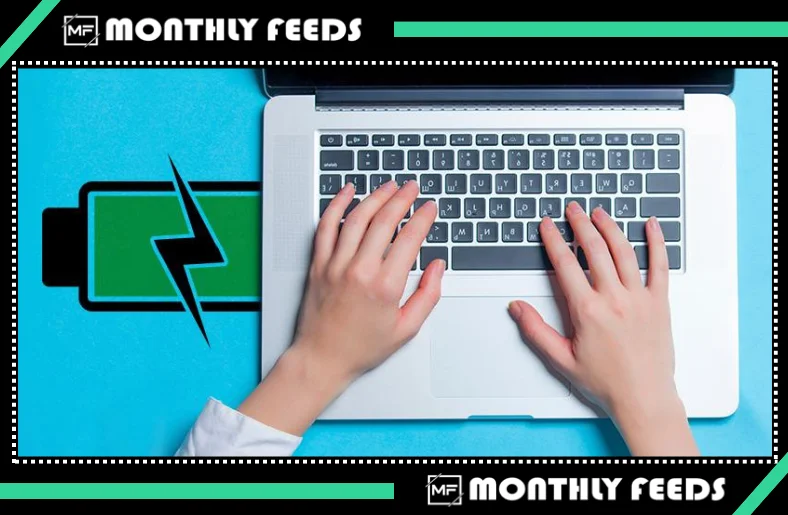Follow these instructions to lessen your battery concerns.
Few people would turn down the option to extend the life of their laptop battery. After all, the battery packs within our computers, cellphones, and other mobile gadgets control both our professional and personal lives. We have to put our life on wait when these batteries run out until we can locate a place to plug back in. It makes sense that one of the first specifications people check for when selecting a new smartphone is an estimate of battery life.
On the other hand, you can go longer than ever without being tethered to a wall outlet with the correct operating system modifications and adjustments. As well as some good habits. When you don’t have to worry about when you can charge all day, life is just better.
Your Screen’s Settings.
The bright, high-resolution display on your laptop is one of the largest energy drainers. The lifespan of your battery will be increased by everything you do to reduce that strain.
Use any keyboard shortcuts your laptop provides to reduce the brightness of the screen as much as you can without straining your eyes. By accessing System. Then Display in Windows’ settings or Displays under System Settings on macOS (System Preferences if you’re on an Apple OS older than macOS Ventura). You may make further in-depth adjustments.
Additionally, screens that shut down sooner consume less battery. Choose Power & battery in the System section of Settings on Windows 11 (Power & sleep on Windows 10) or Screen Saver from System Settings on macOS to configure this and a number of other power-saving features.
You can place USB devices into a low power mode, put hard drives into “sleep” mode (which will consume less power but take longer to wake up from). And more using other options that are accessible on the same panels. You can squeeze out a little more battery life by turning on these changes. But they won’t make a significant impact.
Windows has a specific battery-saver mode that extends the amount of time you may go without charging the battery. When your battery level drops below a specific level. It automatically changes the display brightness, reduces background activities, and limits notifications. Click the battery symbol on the taskbar, followed by Battery Settings or the cog icon, to access this programme.
On macOS, Apple’s low power mode does much the same task, and you can choose when it activates by going to System Settings and Battery. The Battery Health widget is also included on the same settings page; click the i symbol to learn more about your battery and to decide if you want to activate Optimised Battery Charging to prolong the life of your laptop’s battery.
A dark mode is available in both Windows and macOS. But it only works with laptops that have OLED panels since an LCD screen uses the same amount of power to display black as it does to display white. The dark mode option is located in the Windows Settings’ Personalization and Colours section, if you have one.
Reduce the Burden on Your Laptop.
Your battery will discharge more quickly the harder your computer is working. Programmes running in the background that you aren’t using should be closed when you’re not near a power source. Your laptop’s battery should last longer if you use fewer programmes and stay away from resource-intensive ones (such games and video editors).
The browser uses more battery power than you might realise, even if you close everything you are not using. Your laptop will appreciate it if you resist the urge to keep a lot of browser tabs open at once (or at least close them). Avoid video streaming websites when surfing on a battery. They often take a lot of power because they keep the screen active all the time and need a fair bit of processing.
Additionally, audio has an impact. Active speakers that are always playing music drain batteries faster than quiet or a set of plugged-in headphones. Reduce the level if you can, or turn off the sound entirely.
Although insignificantly, maintaining WiFi and Bluetooth connections drains the battery. Your laptop battery may last a little bit longer if you can unplug it and operate offline without using a wireless mouse or other devices. Although we’re not talking about significant advancements, you might survive the day.
Maintain that Battery’s Health.
Over time, lithium-ion batteries gradually deteriorate. But if you take good care of your laptop battery, you’ll get better power life for longer. A smart place to start is to stay away from really hot or overly cold situations because these conditions can wear batteries out more rapidly.
Running taxing apps on your computer may produce the heat your battery wants to avoid. So it’s not simply the weather. This leads us back to the suggestion to limit yourself to simple chores and applications while you’re not near a power source. If you must play games or encode video. Think about installing a laptop cooler to better disperse heat and prolong the life of your laptop’s battery.
The “healthiest” method for charging batteries is a topic of continuing discussion in the IT community. The most recent recommendations state that shallow discharges and recharges are better than totally draining your battery each time over the long run, however you should still do a full discharge roughly once per month. Additionally, it’s usually preferable for the health of your battery to unplug your laptop once it has finished charging as opposed to leaving it plugged in constantly.
Finally, Apple and others advise keeping the battery at a 50 percent charge if you won’t be using your laptop for a while. keeping the battery completely charged or entirely depleted for a lengthy period of time might irreversibly harm it.
See More; click here

